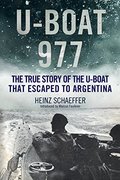The Douglas B-18 was designed to meet a 1934 requirement of the USAAC. This called for a bomber with a range of 2000 miles carrying a ton of bombs, at a speed of at least 200 mph. The Douglas DB-1 design competed with the Martin 146, a modernised B-10, and the Boeing 299, the later B-17. The B-18 was the cheaper and more conservative solution. The B-17 was the radical, much more promising offer, but also more expensive, and it suffered a setback when the prototype crashed. The USAAC decided to order 132 B-18s, but also 13 B-17s to continue the development of the latter.
To design its bomber, Douglas used the successful DC-2 airliner as a basis. The wing and tail were retained, but slightly enlarged. The fuselage was new. The DC-2 was a low-wing monoplane, to have an unrestricted cabin, but the B-18 was a mid-wing aircraft, to make room for a bomb bay under the center section. The fuselage was rather rotund. The nose was rounded and blunt, with a gun position in the upper half and a bomb aiming window at the bottom. The defensive weapons were one gun in the nose, one in a retractable dorsal turret, and one in a ventral position. Two pilots and a navigator completed the crew.
The first DB-1 flew in April 1935, with 850hp Wright R-1820-G5 engines. The first production B-18s, with 930hp R-1820-45 engines, were delivered in early 1937. Experimentally, one B-18 was fitted with a 75mm cannon. This proved the feasibility of the installation in the B-25, but also indicated that the recoil of the weapon was too much for the B-18. In April 1938 the next model arrived, the B-18A, and this featured unique nose contours. The position of the nose gun and the bomb aiming position were reversed: The bomb aimer now worked in the pointed upper half of the nose, and the gunner had a small cupola below him. The new nose also had much more transparencies. The engines were 1000hp R-1820-53s. Of this version, 217 were delivered. An attempt to sell the B-18 to Britain failed, as the RAF opted for the Lockheed Hudson instead. Twenty aircraft were sold to Canada. They RCAF called them Digby Mk.I, and they were basically identical to the B-18A.
The B-18s and B-18As went to the 7th, 5th, 19th and 2nd Bombardment Groups and the 38th and 21st Reconnaissance Squadron. An unusual demonstration was staged in January 1940, when a battalion of troops was ferried by 38 B-18s of the 7th Group. This was the first US experiment with airlifting large groups of soldiers.
Many B-18s were based outside the USA, and at the time of Pearl Harbour 33 were based on Hickam field in Hawaii, and 12 on Clark field on the Phillipines. Most of these were destroyed by the Japanese attacks. The rest of the B-18 force was stationed in the USA and Central America. They were clearly obsolete as bombers, and none were sent to combat zones.
On the other hand, there was a need for anti-submarine aircraft. Early 1942 was a "Happy Time" for the U-boats, that slaughtered the defenceless traffic off the American coast. Therefore, 122 B-18s were modified by installing SCR.517 radar in the nose and a Mk.IV Magnetic Anomaly Detector (MAD) in a tail sting. In this configuration they were called B-18Bs. Some had "retro" bomb racks, with a propelling charge that slowed the depth charges down to zero airspeed, so that they fell vertical. This modification, which was also made to some MAD-equipped Catalinas, was necessary because the MAD detected the metal hull of the submarine only when the aircraft was right over it. Two more were modified, redesignated B-18C, and sold to Brazil. The B-18B flew patrols over the Caribbean Sea. Two U-boats were sunk by B- 18Bs, U-654 on 22 August and U-512 on 2 October. In 1943 the B-18Bs were replaced by B-24s, with a longer range and a large payload.
The B-18s ended their life as trainers or transports. Two were extensively modified for the transport role, and thereafter called C-58.
Specification
Douglas B-18A Bolo
Six-seat bomber
Two 1000hp Wright R-1820-53 radial engines
Wing span 27.28m, length 17.62m, height 4.62m, wing area 89.1m2.
Empty weight 7410kg, max. take-off weight 12552kg.
Max. speed 346km/h at 3050m, cruising speed 269km/h.
Service ceiling 7800m.
Range 1850km with 1133kg of bombs.
Armament: Three .303 guns in nose, dorsal and ventral positions. Up to 2948kg of bombs.



